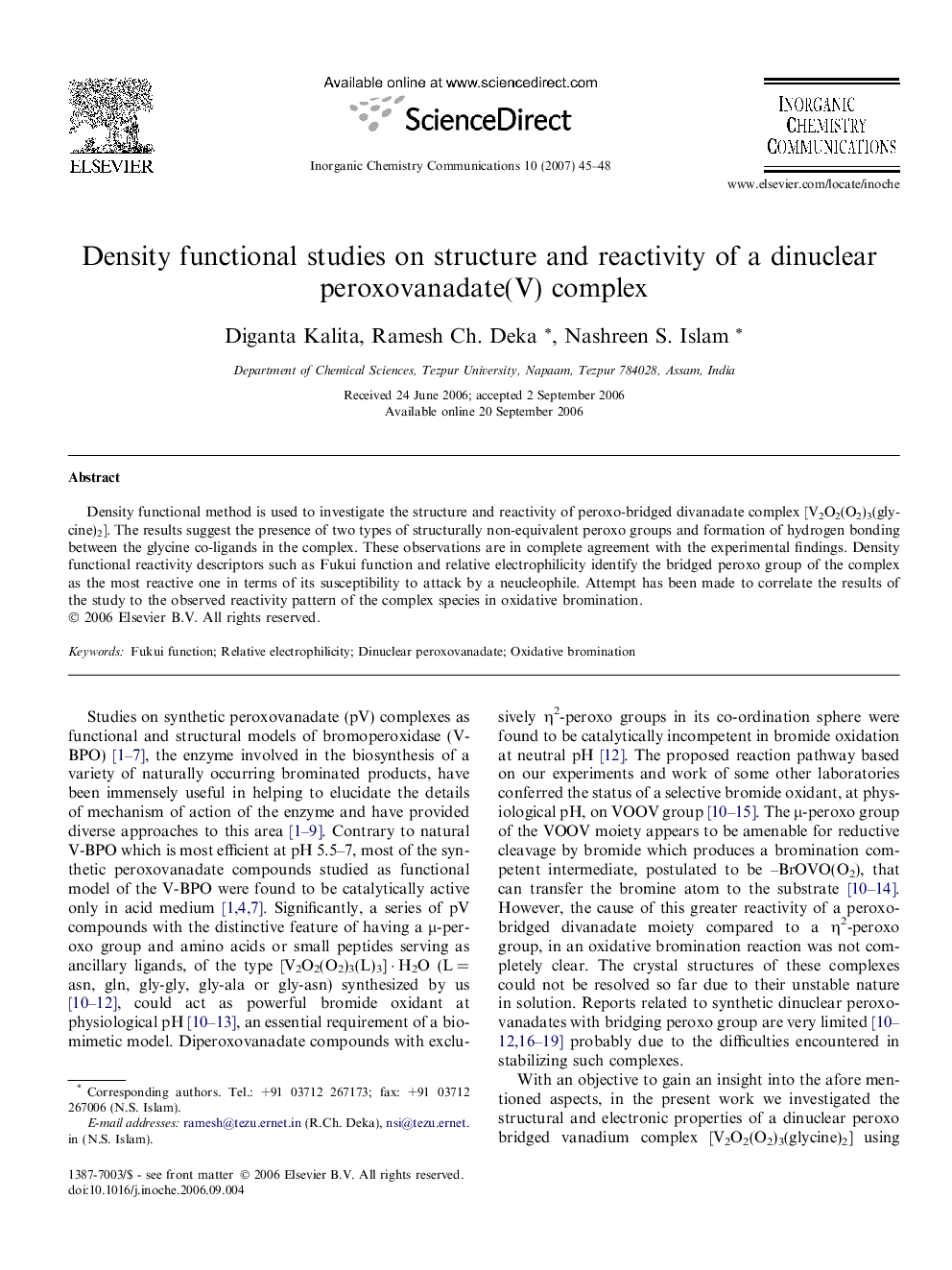| Article ID | Journal | Published Year | Pages | File Type |
|---|---|---|---|---|
| 1303481 | Inorganic Chemistry Communications | 2007 | 4 Pages |
Density functional method is used to investigate the structure and reactivity of peroxo-bridged divanadate complex [V2O2(O2)3(glycine)2]. The results suggest the presence of two types of structurally non-equivalent peroxo groups and formation of hydrogen bonding between the glycine co-ligands in the complex. These observations are in complete agreement with the experimental findings. Density functional reactivity descriptors such as Fukui function and relative electrophilicity identify the bridged peroxo group of the complex as the most reactive one in terms of its susceptibility to attack by a neucleophile. Attempt has been made to correlate the results of the study to the observed reactivity pattern of the complex species in oxidative bromination.
Graphical abstractStructure and reactivity of peroxo-bridged divanadate complex [V2O2(O2)3(glycine)2], has been studied by using density functional method.Figure optionsDownload full-size imageDownload as PowerPoint slide
